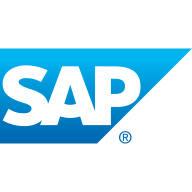Offers advanced search capabilities, integrates seamlessly with SAP and efficiently stores non-essential business contentConsider you have some use cases. For example, something for your accounting or procurement department. And you purchase equipment, machines, and plants for plant-related operations. Essentially, there will be manuals and basically anything and everything related to your particular equipment. So, where do the equipment entries go? They go into SAP. Depending on your SAP deployment, it can go into some database. Most companies these days are talking about SAP HANA and stuff like that. So it will be stored in SAP HANA. But, these documentation, drawings, manuals, and help files for these big pieces of equipment, where do they go? That’s where Extended ECM for SAP comes into the picture. All these integrations are through a one-way push, essentially, but with two-way access. So as a user in the procurement department or the accounting department, or an engineering department where you are using SAP for asset management entries inside your system. All those related documents, drawings, manuals, and files have to be stored somewhere. If you store them in SAP, it will be a costly implementation going forward. After maybe a couple of years, you will realize that it’s too much to deal with because HANA database will be too costly. There will not be much business value because you cannot utilize a lot of search and cool features inside your application from an SAP perspective. That’s where you will integrate SAP. For example, SAP Extended ECM for SAP Plant Maintenance. One of the modules SAP provides is SAP Plant Maintenance. So what you will do is deploy Extended ECM for SAP, then try something called SAP Plant Maintenance, Extended ECM for SAP Plant Maintenance. The content maintenance, manuals, files, drawings, and related stuff, its details or tags, or any kind of stuff is stored in your SAP. But anything and everything else is pushed through this integration into Extended ECM platform. So now it is available to be utilized by your business user who knows nothing about SAP. They only live and breathe in a different management system. They can look into these details depending on what kind of integration has been done for that company. So that’s one use case. Second use case will be in SAP itself. Now, if you are an SAP user, you have this information readily available at your fingertips. Anything goes wrong in your maintenance or any kind of management, you can look into these details, which are readily available because this documentation lifecycle is being managed by Extended ECM for SAP. It will give you extended storage capabilities within your SAP application. So it will be a two-way integration, essentially. Similar, wider features will be available within Extended ECM platform. Within SAP, you have these extra features called business attachments or business content retrieval. Those business contents are stored inside Extended ECM, and those features will be available within your SAP GUI from an SAP perspective. So it’s a win-win situation for both worlds.


